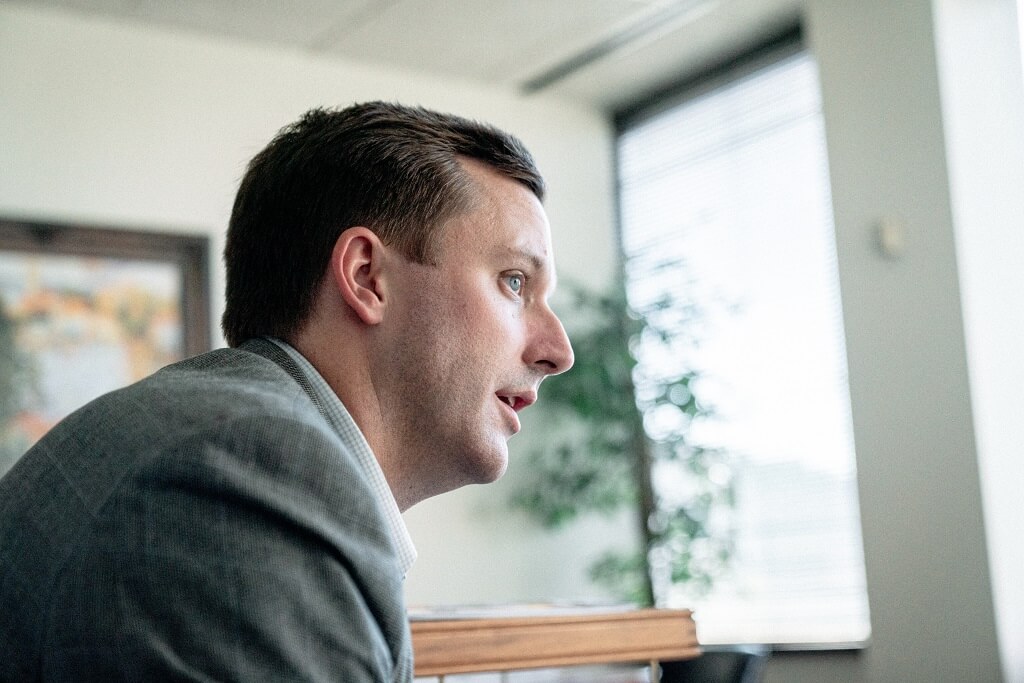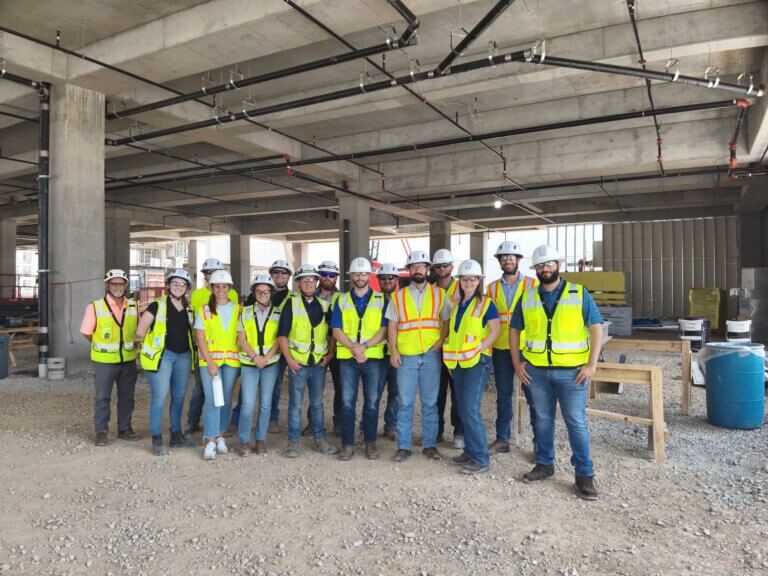
This article originally appeared on the AEC Business website.
I had the pleasure of interviewing Turner Burton, President of Hoar Construction. We discussed waste in construction and how his company is on a mission to eliminate it.
Can you say a few words about yourself and your company?
I grew up around construction and this company, hearing about the business from both my grandfather and my father. I started working on job sites in high school forming concrete, continued working on projects throughout college, and since graduating from college, I’ve taken on different roles in the company to ensure I understand all aspects of the business.
Hoar Construction was founded 80 years ago, and throughout our history, we’ve been committed to learning from every project to improve our processes and deliver the best building experience possible for our clients and partners. But it’s the relentless pursuit of improvement that really sets us apart as builders – to always strive to be the best and do the right thing for our customers and partners. There’s something to be said for setting a goal that you’ll always be working toward. It fosters hard work, collaboration, and productive effort. If we’re always working to find a better way, then we will always be improving. That effort drives better results for our owners and everyone we work with. Essentially, we’re always working toward something. Always improving. Always in process.
The construction industry is often characterized as conservative and a laggard in adopting new technologies. What do you think about this assertion?
I agree. Issues that plagued our industry 20 years ago are the same ones hindering our progress today. Productivity and efficiency still lag in comparison to other industries like manufacturing, and we have been notoriously slow in adopting new technology. But, I think things are starting to evolve and top industry players are adopting new technologies to improve communication and efficiency. Our company has a technology division that researches and assesses new technology that can potentially improve the way we build, vetting everything to ensure it also adds value to our clients. For us, a piece of technology is only useful if it is actually adding value — increasing speed of work, reducing waste, increasing safety, or improving quality — otherwise it’s just adding extra expense to our clients’ budget.
Your company has been in business for decades. What kind of changes have you personally experienced in your business environment?
One of the biggest changes I’ve seen has been the increased willingness of our clients and architect partners to get the General Contractor involved earlier to collaborate and lead the design to the budget. There is some irony in this change as it is more like “what’s old is new again,” as this is how my grandfather did things 50 years ago.
You’ve been talking about waste in construction. What kinds of wastes are most typical?
There is a lot of waste that can happen on a construction site, but I think the most common, and the types of waste that hurts projects the most, are the waste of time, materials, and labor. Starting even before construction begins, if a design team and contractor work in silos, they’re setting a project up to be wasteful. There’s an increased risk for change orders, RFIs, budget overruns, and schedule delays. Plus, if the drawings are incomplete, we have to hand the drawings back to the design team for revision. It’s a very wasteful process that wastes time and pushes the construction start date back.
In the field, anytime a crew on a project site is waiting for materials, equipment, or for another crew to complete an activity, valuable time is wasted. If a team orders materials too early or orders too much, those costly materials are wasted. And if the work isn’t properly planned and mistakes are made, the work has to be torn out and redone — wasting labor hours, time, and, materials.
Essentially, all this waste adds up to a lot of extra cost. We’ve found that the key to preventing the waste, and the unnecessary added cost, is by adding extra time for planning to all project phases. In the design phase, we’ve had success getting involved early with the design team and working together to fill in gaps and offer advice on constructability, as the drawings are being completed. In the field, we hold pull planning meetings with our trade partners and collaborate during weekly work plans to identify the most efficient schedules and workflow, eliminating significant waste in the process.
What are the consequences of waste and who suffers most?
The consequences of waste are delayed jobs and increased costs for our owners. But, waste can also frustrate field teams and trade partners because things aren’t moving as quickly as they could be. Not to mention, when a construction start date slides due to waste during the design phase, the pressure is put on the field team to make up that time.
What made you focus on eliminating waste?
Construction industry studies show more than 50 percent of time in the field is wasted on unproductive work or activities. That means on any given job, half of the work isn’t helping the project, or the team, progress.
That kind of waste is unacceptable, and I know we’ve all experienced the frustration it causes to developers, architects, engineers, general contractors, and trade partners. I think the first step to reduce waste is early collaboration between owner, architect, and contractor during the design phase. The earlier we can communicate, collaborate, and set clear expectations, the better chance we have of a successful outcome with significantly less waste.
What is your company doing in order to make work less wasteful?
One of our company’s core value is relentless pursuit of improvement. I think one of the things that sets us apart, is that our employees not only know but believe in our core values. We constantly strive to find better ways to build, reduce waste, and improve the industry. We’re also process-driven builders, and after 80 years in this industry, we know our processes work. One process that is focused on eliminating waste is what we call SmartBuild, a company-wide initiative, based on lean construction methods, to reduce waste on and off the job site. We also believe that preconstruction is one of the best opportunities to eliminate waste in a project.
That’s why we commit so much time and resources to that phase — sometimes we spend even longer planning a project than we do building it. We’re also fortunate to partner with clients and design partners who believe like we do, that early collaboration and communication can eliminate waste and improve the schedule, budget, and overall experience of a project.
Sustainability and circular economy are one aspect to waste. How would you take them into consideration in construction?
I think those of us in the industry are really looking at the lifespan of the buildings we’re constructing and trying to make sure there is some flexibility in how they can be used. If we’re building for a 20-year lifespan, that will look differently than building something to last 100 years, as we often do on college campuses.
Digitalization and an industrialized construction are in the headlines. What are your thoughts on their impact in the future?
There are certain aspects of good, solid construction that will always be used. But there is also a lot of room for improvement. We can use technology to eliminate waste, build faster, safer, and with improved quality. Right now, we’re seeing a continued increase in prefabrication and modular construction. Because these construction methods involve building portions of a structure off site, in a controlled setting, they can improve quality, increase the speed of construction, and eliminate significant waste. Certain projects especially lend themselves to these methods, like building patient rooms for a new hospital which requires trades to repeat the same process over and over. In some cases, these methods can save weeks on a project so they’re also ideal for projects in market sectors where speed to market is a top priority for clients, like hospitality and multifamily.

